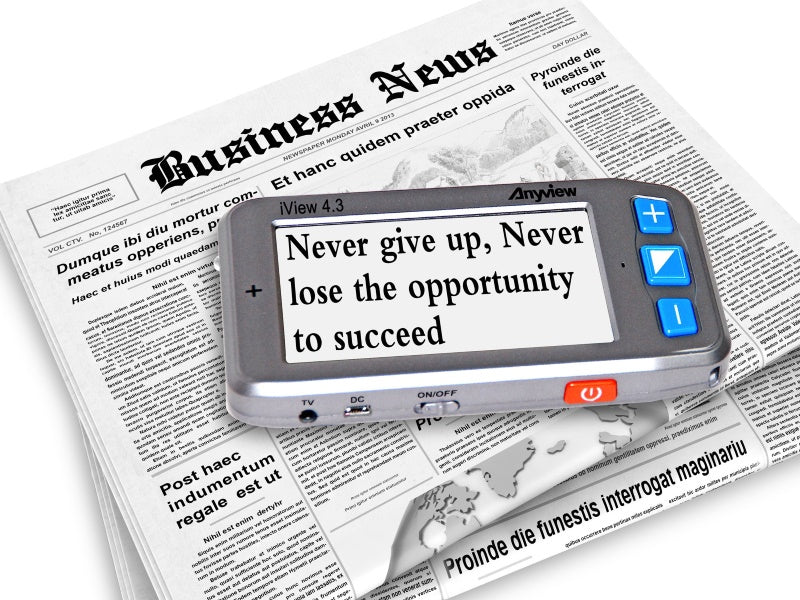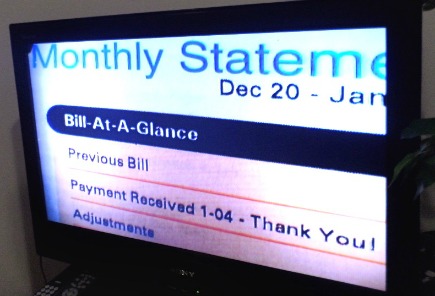
Magnifiers for Macular Degeneration
Choosing the Right Macular Degeneration Magnifier
It is important to use the correct magnifier for your vision. Bigger is not always better. In order to select the best type of magnifier to meet your individual magnification one needs to consider:√ The Lens Size

The lens size needs to be large enough to see as much as possible and/or small enough to be carry in your pocket or purse.
√ The Magnification Magnification is the ratio between the apparent size and the true size of the viewed object behind the lens. If an object behind the lens appears ten times larger than its true size, and the object is in focus, the magnification is 10X.
√ Focal length Focal Length has do to with how far the magnifier needs to be from your eyes and from the object. The stronger the magnification, the shorter the distance between the magnifier and the object. Magnifiers come in different powers or strengths.
There are a couple of principles to know about magnifiers.
They are: 1. The stronger the magnifier the smaller the viewing area. 2. The stronger the magnifier the closer the lens must be to the viewing area. Use the weakest magnifying power that does not cause eye strain. Often a stand magnifier (a magnifier on legs) is the magnifier of choice because it is preset with the correct distance to maintain the best focus. However, if you are able to read a book with a 2x hand-held magnifier, the magnifier can be several inches away from the book and your eyes can be several inches away from the 2x hand-held magnifier.
Macular Degeneration Magnifier Lens - Acrylic or Glass?
There are two types of lenses: √ Glass lenses Glass lenses allow more light to be transmitted through the lens and usually have very clear optical qualities. It is hard, but not impossible, to scratch a glass lens. √ Acrylic lenses Acrylic lenses are very lightweight compared to glass lenses. They normally don't break or shatter and are scratch resistant. Many of today's magnifiers are acrylic and have exceptional optical qualities.
Types of Macular Degeneration Magnifiers
Illuminated Magnifier
A magnifying glass with light provides light and magnification. As your macular degeneration progresses you will need
Full Page Magnifier
The size of this magnifier limits the magnifying power. The most it can magnify is 2X - 3X. However, with the right lighting, this can be enough magnification for many people. A full page magnifier offers the benefit of seeing more than just a few words on a page. There are two kinds of full page magnifiers: 1. Handheld This magnifier has to be held at just the right distance for clarity so it is best for short-term reading - like checking a recipe in your favorite recipe book or a magazine article. 2. Hands Free Stand or neck magnifiers leave your hands free and there is no need to constantly adjust for the right distance so the words aren't blurry. Find out more about these reading magnifiers here:
Handheld Electronic Magnifier
A handheld electronic magnifier offers many features that are not available with the traditionalhand held magnifying glass. Features such as:
1. Larger Field of View 2. Ability to Adjust the Magnification Power from 2x - 10x without having to get closer. 3. Adjust the contrast by choosing the contrasting colours best for you - such as black print on white background, white print on a black background or yellow print on a black or blue background 4. Crisp, clear picture in either coloured or in black& white on a LCD Screen 5. Adjust the brightness.
Magnifying Desk Lamp
A magnifying desk lamp is a great visual aid to help with reading, hobbies, writing bills and cheques, writing a letter or addressing an envelope. The magnification power for these lamps range from 2X to 3.5X. The lenses can be made of high quality plastic or glass for distortion free viewing. Get one with an adjustable or gooseneck so it can be positioned in a way to provide you with the best visibility and comfort.
The TV Magnifier

Pocket Magnifier for ARMD*
Pocket Magnifiers are small, compact and lightweight magnifiers that you can take with you anywhere. Their field of vision is limited but they are very useful for a quick read.of small printed matter. (*Age Related Macular Degeneration) There are round, rectangular, and square pocket magnifiers with glass or plastic (acrylic) lenses. Both illuminated and non-illuminated magnifiers are available illuminated are the best allrounders. The range of magnification goes from 2x to 20x power magnifications.
Handheld Magnifier
For short periods of reading a hand held magnifying glass will usuallysuffice. Ideal to read a newspaper article, a letter, instructions, or to go through your mail, check a bottle label. These handy magnifiers come in many different sizes, shapes and powers. Illuminated LED (Light Emitting Diode) hand held magnifiers offer excellent light and help the magnification. The bright LED lights don't burn out, very economical battery life and you are independent of having to relying on good light. The benefit of a hand-held magnifiers is that they are portable. They come in a variety of prices and magnification power from 2X to 100X.


